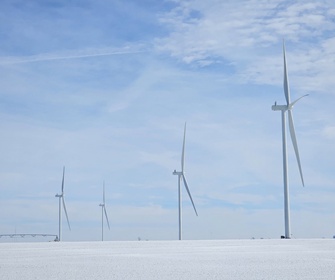Wind resource assessments estimate that the Great Lakes’ potential power capacity is 160 gigawatts for fixed-bottom wind turbines and about 415 gigawatts for floating wind energy systems. That wind energy resource potential exceeds the annual electricity consumption in five out of eight of the U.S. states bordering the Great Lakes.
To gain a greater understanding of this possibility, as well as the obstacles facing Great Lakes wind energy development, the U.S. Department of Energy’s Wind Energy Technologies Office funded research by National Renewable Energy Laboratory (NREL) staff. The resulting report, Great Lakes Wind Energy Challenges and Opportunities Assessment, defines a comprehensive research program to address these issues and charts a commercial pathway for wind energy in the Great Lakes that begins before 2035.
NREL’s research indicates that the adoption of offshore wind energy could enable states in the Great Lakes region to achieve their clean-energy goals, boost their economies with high-paying jobs, and provide a cleaner environment for residents. One of the most feasible economic benefits to Great Lakes offshore wind energy development is the potential to expand local logistics and supply chains. This includes the development and revitalization of factories, ports, and vessels that meet the needs of the new Great Lakes-based offshore wind energy industry. The biggest obstacle to developing offshore wind energy in the lakes is the narrow locks of the St. Lawrence Seaway and the Welland Canal. These channels, which extend out to the Atlantic Ocean, are too narrow to accommodate the enormous ocean vessels that are used to install offshore wind turbines.
Another big challenge is freshwater ice, which is stronger than sea ice and more prevalent in the Great Lakes than in Atlantic offshore wind energy sites. The lakes’ annual freshwater surface ice introduces new technological challenges, especially for floating wind turbines, which have not yet been proven under these conditions.
Other deployment issues related to developing wind energy in the Great Lakes could slow the process and potentially increase project capital costs. These include installing the turbines far enough out from shore to mitigate viewshed concerns, environmental issues such as potential bird and bat interactions, and competition with nearby, utility-scale land-based wind and solar energy that is currently less expensive. Further targeted research is needed to develop an informed Great Lakes wind energy strategy.








